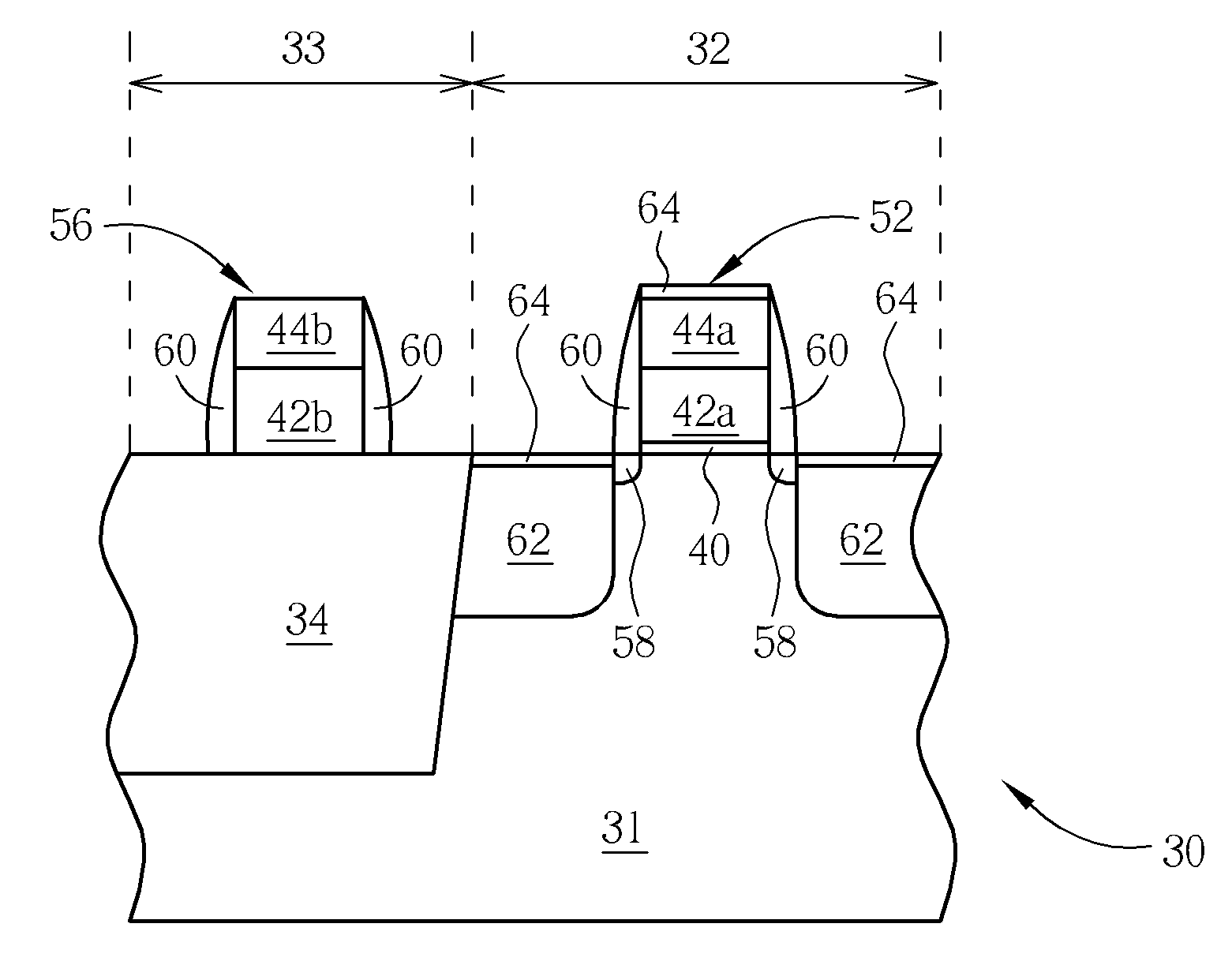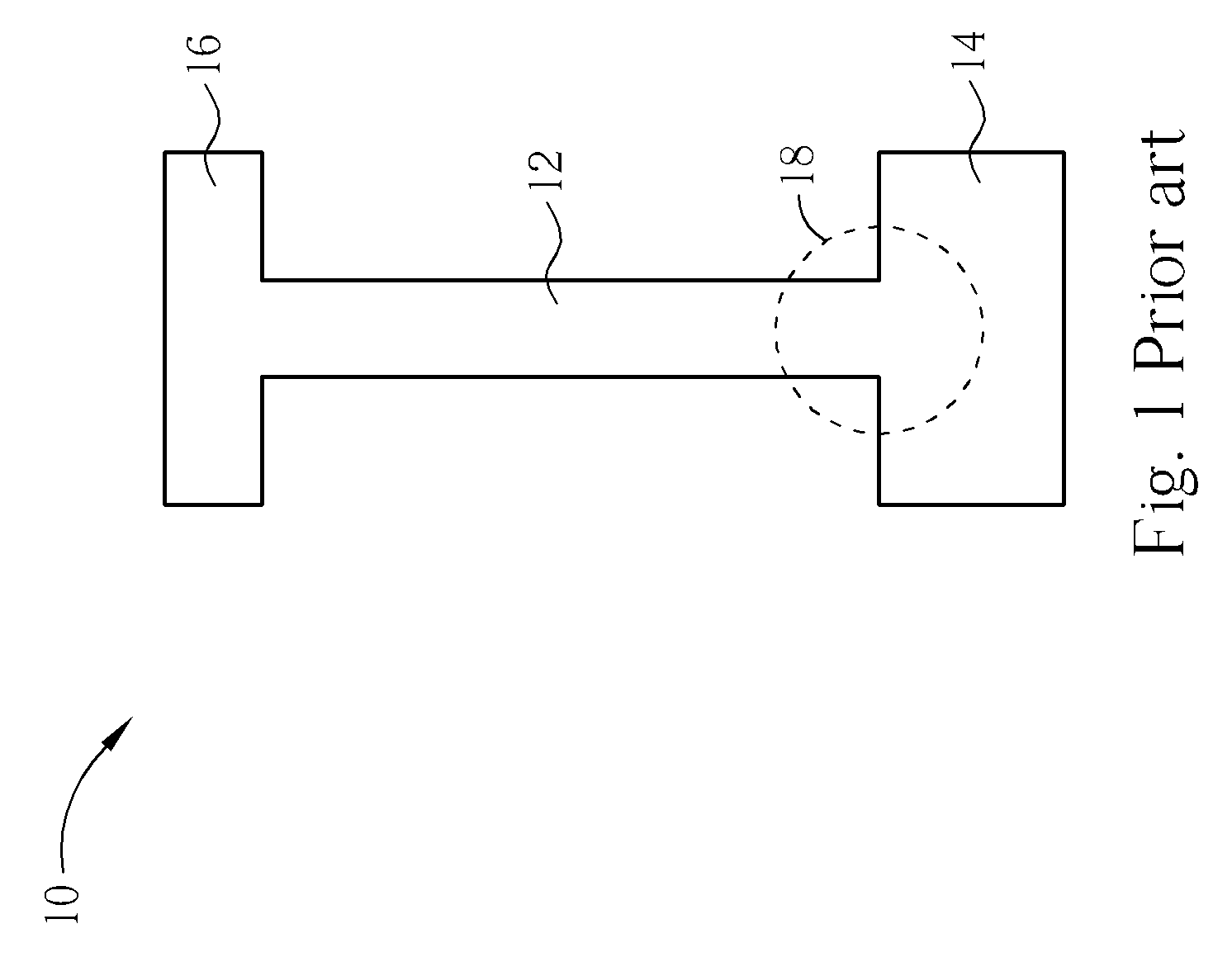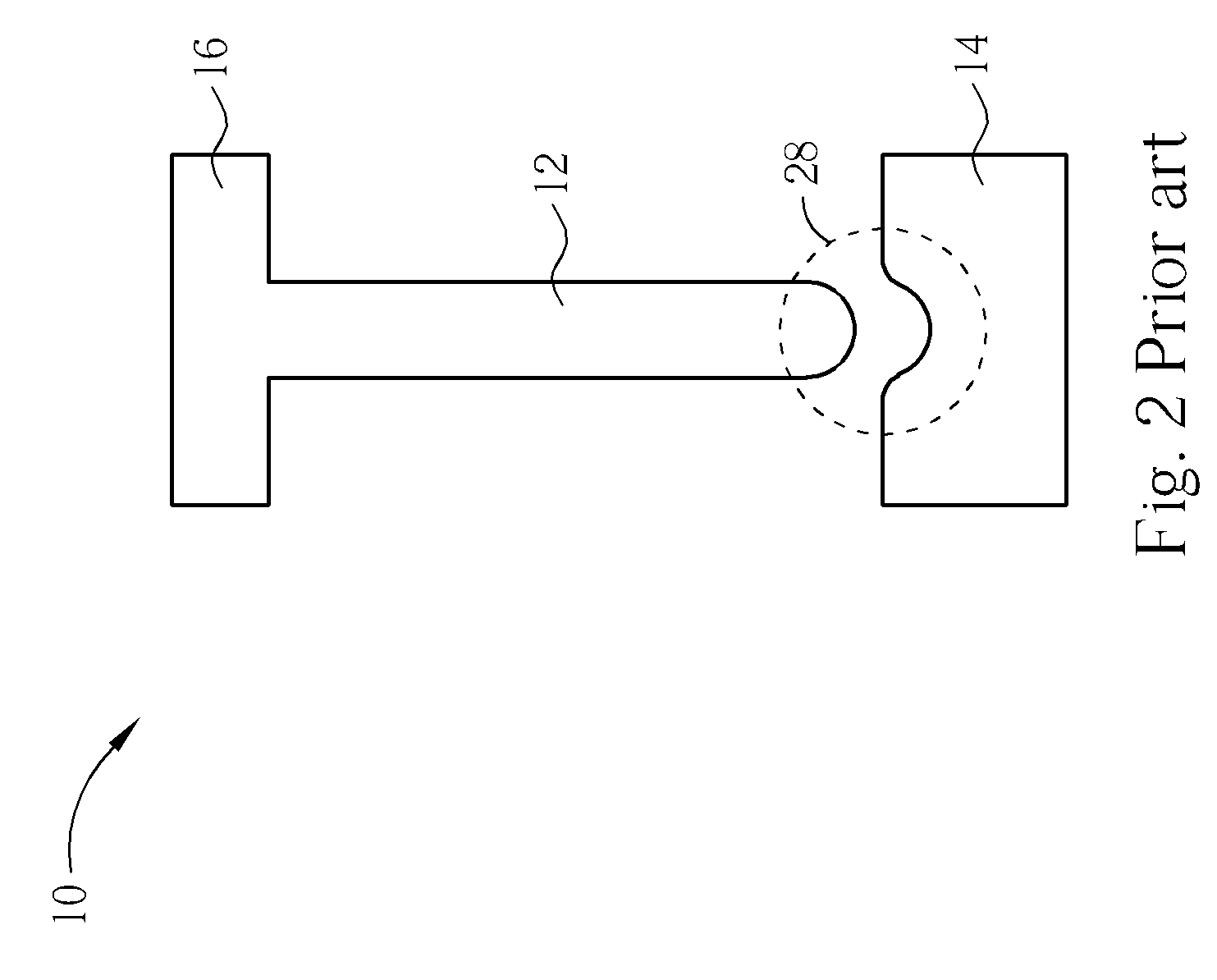Efuse structure
a technology of fuses and fuses, applied in the direction of electrical apparatus, semiconductor devices, semiconductor/solid-state device details, etc., can solve the problems of defective circuits, fuses can be selectively blown for repairing, and the whole chip will be unusable, so as to increase the repair yield and the effect of easy blown
- Summary
- Abstract
- Description
- Claims
- Application Information
AI Technical Summary
Benefits of technology
Problems solved by technology
Method used
Image
Examples
Embodiment Construction
[0020] Please refer to FIGS. 3 to 7. FIGS. 3 to 7 are diagrams of the manufacturing process of an eFuse structure on a semiconductor chip according to the present invention. As shown in FIG. 3, a semiconductor chip 30 comprises a substrate 31 and surface of the substrate 31 includes a first region 32 and a second region 33. The second region 33 forms a plurality of insulting layers called STI (shallow trench isolation) layers or field oxide layers by utilizing a shallow trench isolation process or local oxidation (LOCOS) to surround and isolate the first region 32. The first region 32 forms an active area for a MOS.
[0021]FIG. 4 illustrates a thermal oxidation or CVD (chemical vapor deposition) process used to form silicon dioxide or silicon nitride as a gate insulating layer 40. The depth of the gate insulating layer 40 is almost matched with the surface of the STI (shallow trench isolation) 34. The deposition process forms a poly silicon layer 42 and a poly silicide layer 44. The ...
PUM
 Login to View More
Login to View More Abstract
Description
Claims
Application Information
 Login to View More
Login to View More - R&D
- Intellectual Property
- Life Sciences
- Materials
- Tech Scout
- Unparalleled Data Quality
- Higher Quality Content
- 60% Fewer Hallucinations
Browse by: Latest US Patents, China's latest patents, Technical Efficacy Thesaurus, Application Domain, Technology Topic, Popular Technical Reports.
© 2025 PatSnap. All rights reserved.Legal|Privacy policy|Modern Slavery Act Transparency Statement|Sitemap|About US| Contact US: help@patsnap.com



